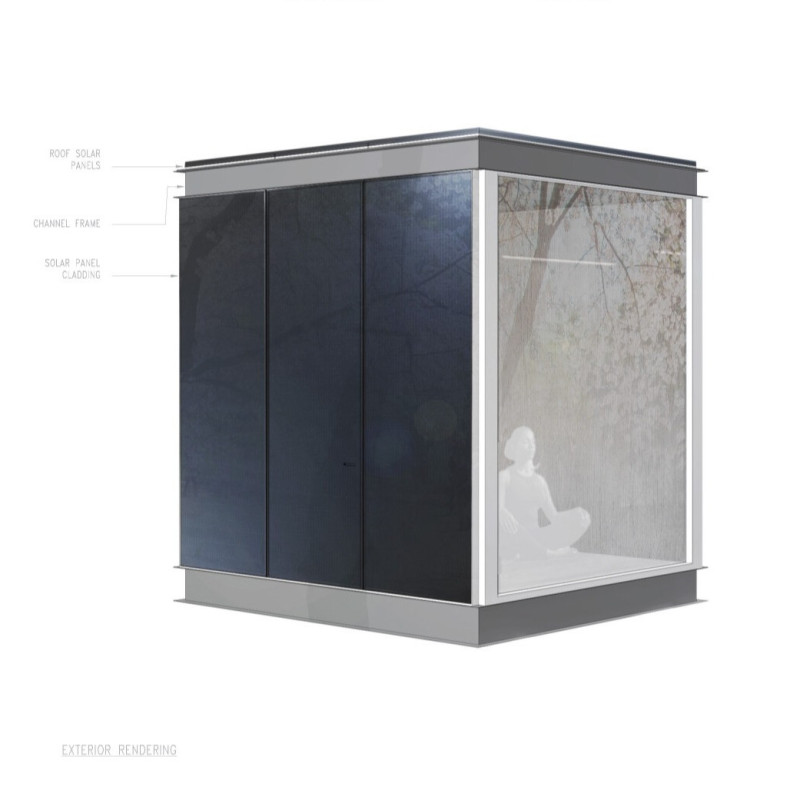5 key facts about this project
The Tokyo Meditation Module is an architectural project designed to serve as a refuge for meditation within the dense urban landscape of Tokyo. This modular structure addresses contemporary challenges faced by city dwellers, offering a dedicated space for reflection and tranquility amid the fast-paced environment of metropolitan life. The design emphasizes simplicity, modularity, and integration with its surroundings, making it a relevant addition to the urban fabric.
Design Intent and Functionality
The Tokyo Meditation Module operates as a meditation space, accommodating individuals seeking calm and focus. The design centers on a cubic form that promotes the concept of modularity, allowing for easy replication across different urban sites. This feature enhances accessibility, making the module an inviting resource for those looking to practice mindfulness.
Interiorly, the space incorporates three wooden walls, providing a warm, organic atmosphere suitable for meditation. A central shelf integrated into one wall offers practical storage while maintaining a minimalist aesthetic. The use of wood in the interior fosters a connection to nature, which is vital for an effective meditation experience. Additionally, the module features a glass facade on one side, allowing natural light to enter while providing views of the urban environment. This connection with the outside world facilitates an immersive experience without compromising the peacefulness intended for users.
Sustainability is a key focus of this project, highlighted by the inclusion of solar panels on the roof. These panels enable the structure to generate its energy, affirming a commitment to environmentally responsible design. The thoughtful consideration of solar orientation further enhances the building’s efficiency and effectiveness as a meditative space.
Unique Aspects of Design
What sets the Tokyo Meditation Module apart from similar projects is its dual focus on mental wellness and sustainable living. The integration of technology through the “Meditation Module App” enhances user engagement, allowing individuals to locate nearby modules conveniently. This element promotes not only personal reflection but also community interaction among users.
The module’s architectural design carefully considers scale and context within the urban environment. Its deep navy exterior color acts as a visual anchor against the city’s vibrant palette, creating a dedicated space that signifies retreat. The choice of materials—wood and glass—further speaks to the project's intention to blend a modern aesthetic with a natural feel, striking a balance that is integral to meditation.
Further analysis of the project, including architectural plans, architectural sections, and architectural designs will provide more insights into the thought processes and strategic planning that shaped the Tokyo Meditation Module. Readers are encouraged to explore these elements for a comprehensive understanding of this innovative architecture.























